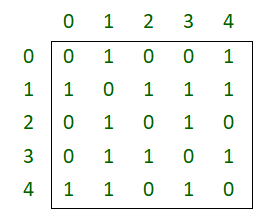

2005), which may be less directly involved in regulating cognitive control.Īs with the basic science literature, the focus of studies of error processing in schizophrenia has also been centered on error-related dACC responses, though some studies have reported diminished error-related BOLD responses compared to healthy controls in other regions ( Kerns, et al. Other work suggests that regions in the insula may signal uncertainty or more “affective” responses associated with errors ( Menon, et al. Further, this finding suggests that it may be important to examine functional connectivity among regions involved in error-processing in addition to activation levels in responses to errors. This finding is consistent with the hypothesis that the interaction between the dACC and prefrontal regions plays a central role in the generation of error-commission related neural responses, which is consistent with theories proposing that the dACC signals the need to increase cognitive control and recruits lateral PFC regions ( Botvinick, et al. 1993, Gehring and Knight, 2000, Ullsperger, et al. error-related negativity, Gehring, et al. 2007), evidence from lesion studies suggests that damage to lateral PFC (but not orbito-frontal or temporal) regions compromises neural responses associated with error commission in dACC (i.e. 2001) While a number of studies have reported that post-error slowing occurs regardless of subjects’ awareness ( Hester, et al.

Previous studies have linked error-related activity in anterior frontal and parietal regions with the awareness of making a mistake ( Davies, et al. Accordingly, several studies have reported the activation of other regions in association with error-commission in healthy adults, including regions in the anterior insula, inferior parietal lobule, anterior prefrontal cortex (PFC), and thalamus (reviewed in Taylor, et al. 1999).Īlthough the dACC has received much attention in the error literature, accurate error-detection and subsequent behavioral adjustments are unlikely to rely on a single brain region. 2006, 2008) but others have reported significantly less slowing of reaction time after error commission in SCZ ( Alain, et al. A number of studies have reported intact post-error slowing ( Laurens, et al. However, in contrast with the consistency of evidence for impairments in dACC responses to errors in schizophrenia, behavioral measures of error-based behavioral adjustments in SCZ have generated mixed results. 2004 but see Gehring and Fencsik, 2001 Luu, et al., 2000 Fellows and Farah, 2005). 2009).Ĭonsistent with the hypothesis that this error processing system is relevant for adjusting behavioral responses, a number of studies have associated dACC activation with post-error slowing, an error-based behavioral adjustment ( Rabbitt, 1966), such that greater dACC responses predict larger increments in reaction time following error-commission ( Gehring, et al. In line with the view that impairments evaluating errors in schizophrenia may contribute to non-flexible behavior, decrements in error-related responses in the dACC have been repeatedly reported in the schizophrenia literature (for review see Mathalon, et al. 1998, Ullsperger and von Cramon, 2004) present converging evidence in support of a specialized error-detection system in the brain, which heavily relies on the dorsal anterior cingulate cortex (dACC). 1991) and functional magnetic resonance imaging (e.g. 2003, Niki and Watanabe, 1976), event-related potentials (e.g.

Studies using single-unit recordings ( Ito, et al. Detecting an error in performance is a critical component of evaluative functions that allow the flexible adjustment of behavior to optimize outcomes. 1982, 1986 Frith and Done, 1989), and to adjust their responses based on advance information or feedback ( Elliott, et al. Individuals with schizophrenia (SCZ) often show impairments in their ability to monitor their ongoing behavior ( Malenka, et al.


 0 kommentar(er)
0 kommentar(er)
